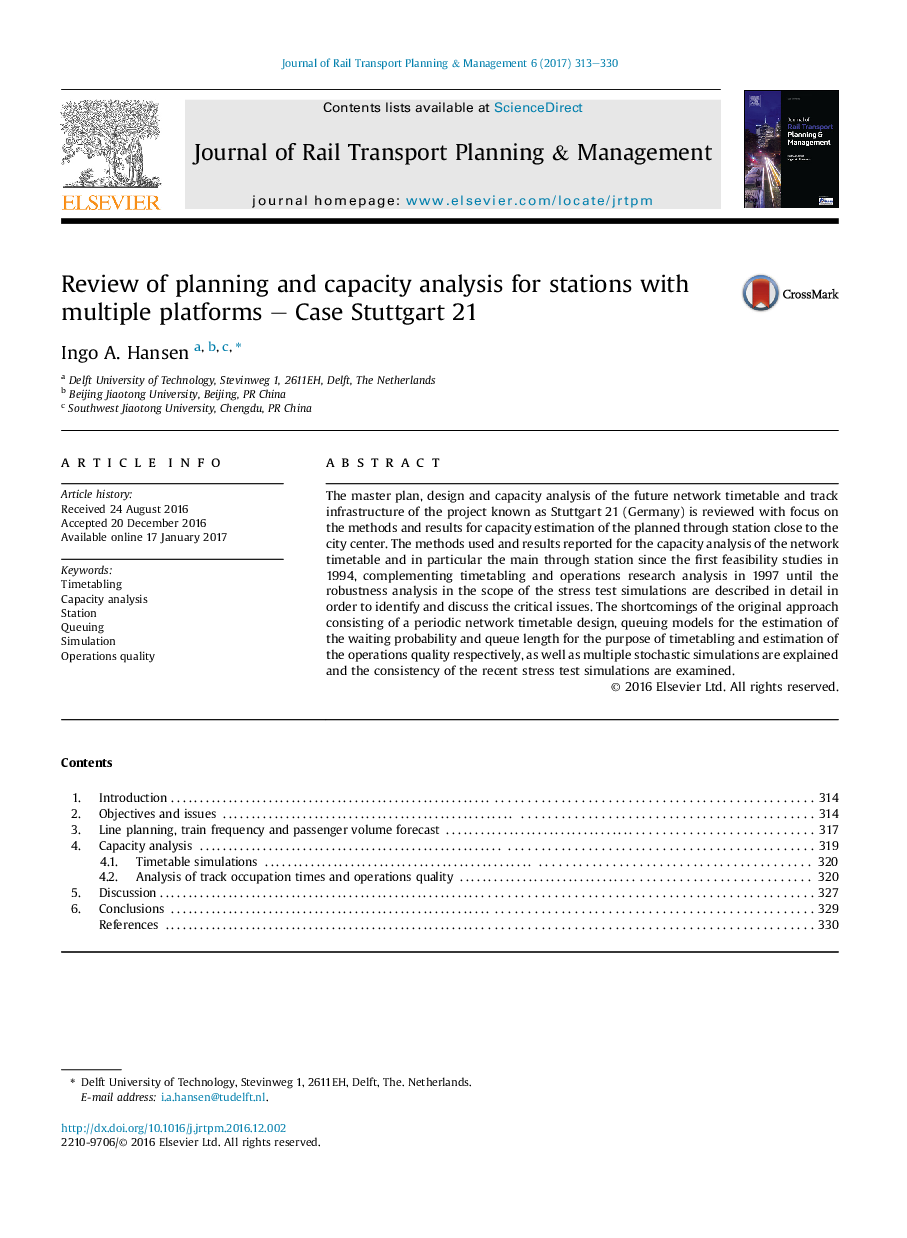| Article ID | Journal | Published Year | Pages | File Type |
|---|---|---|---|---|
| 4923662 | Journal of Rail Transport Planning & Management | 2017 | 18 Pages |
â¢Capacity analysis by means of queuing and simulation models.â¢Network timetable and station throughput estimation for mixed operation of HS, IC and regional trains.â¢Analytical estimation of capacity of the main station and of the operations quality too optimistic.â¢Standards of the incumbent train operator for the design of running time margins, (minimum) dwell time at stations, as well as for the estimation and simulation of train delay generation and propagation require more accurate validation.
The master plan, design and capacity analysis of the future network timetable and track infrastructure of the project known as Stuttgart 21 (Germany) is reviewed with focus on the methods and results for capacity estimation of the planned through station close to the city center. The methods used and results reported for the capacity analysis of the network timetable and in particular the main through station since the first feasibility studies in 1994, complementing timetabling and operations research analysis in 1997 until the robustness analysis in the scope of the stress test simulations are described in detail in order to identify and discuss the critical issues. The shortcomings of the original approach consisting of a periodic network timetable design, queuing models for the estimation of the waiting probability and queue length for the purpose of timetabling and estimation of the operations quality respectively, as well as multiple stochastic simulations are explained and the consistency of the recent stress test simulations are examined.
